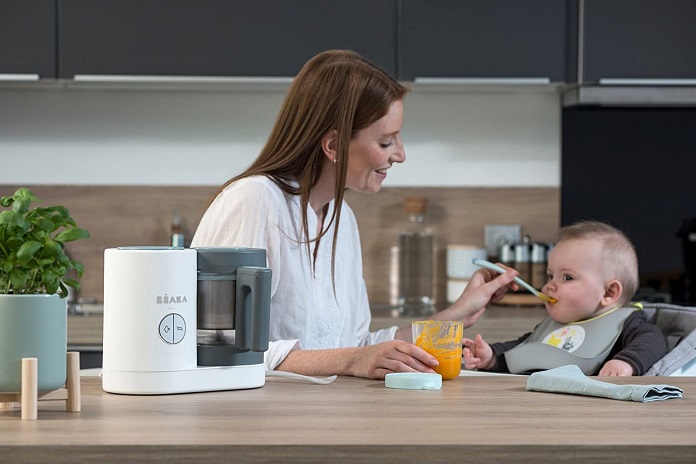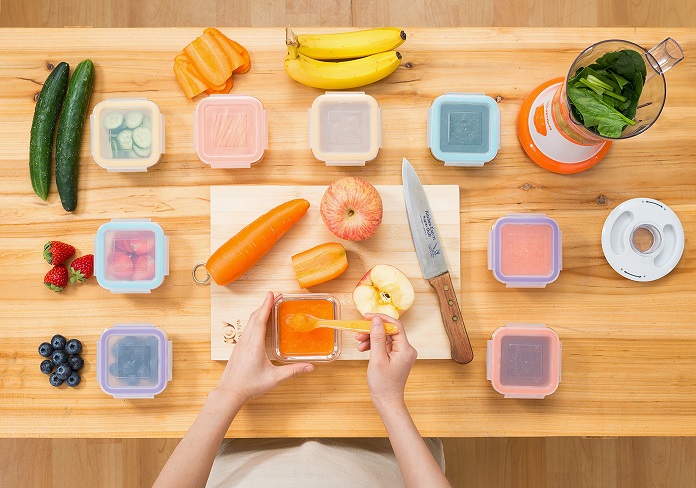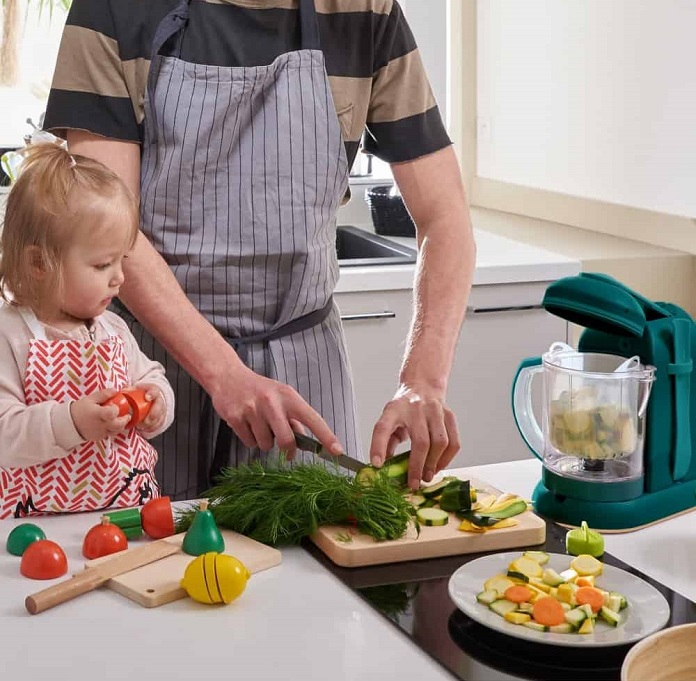
If your little one is ready for solids, you may be wondering what you’ll need for a mess-free baby feeding. You may also be having doubts about whether you should go with commercial or homemade baby food. While store-bought baby food can be a convenient option for some families, preparing homemade baby food comes with many advantages.
With homemade baby food, you know exactly what you’re feeding your baby. You can choose your own fruits, vegetables and other foods for purees, rather than relying on the flavours chosen by manufacturers. There is also the fact that your child can get used to eating the same food as the rest of the family – just in puree form. Preparing your baby food home can also be more economical than buying pre-packed foods.
For some, the idea of making their own baby food may seem daunting, but it doesn’t have to. In fact, the work involved in making your own baby food can very little considering that you have the right tools and techniques at hand. Here is what you’ll need for an easy and hassle-free baby food prep experience.
A Good Baby Food Steamer and Blender

While there is the initial investment you’ll be pleased to know a baby food steamer and blender can be beautiful, functional and more economical for preparing food compared to the long term cost of shop-bought baby foods.
Designed specifically for making baby food, these devices function as a steamer, in effect cooking the raw food, which then can be pureed in the same container. You’ll find a range of them available on the market, which might make it challenging to know which one to choose. My suggestion is the Beaba baby food steamer and blender.
The sleek design of this baby food maker (which is also available in several colours), means it takes almost no space on your countertop. But the greatest thing about this device is how easy it’s to use. All you have to do is chop the goods you’ll be using, place them in the basket, add water to the reservoir, and press the ON bottom. There is no need to watch the stove, set a timer, or wonder if you added the right amount of water. After 15-20 minutes (depending on what you’re cooking), the device beeps and your food is steamed. The excess water from steaming is collected in a mixing container in which the steaming basket sits. You can then just put the steamed food directly into the mixing container together with the water. Close the lid, then turn the knob on the machine to puree. Your baby food is done!
When your child is ready for it, you can also use the Beaba food maker to steam chicken, raw meat and fish as well. The device can also be used to cook rice, quinoa and other tiny grains, but you’ll need to buy a rice-basket insert without slits separately. While it would be more convenient if it was just bundled with the initial purchase, the basket cost around $7 dollars and can easily be found online.
Practical Storage Containers

Being able to make a large batch of baby food all at once and store the rest for later, can save you a ton of time and work. For that, you’ll need storage containers that can fit individual portions for your baby. A variety of them is available on the market ranging from divided storage containers to food jars. Don’t go all crazy and buy a bunch of storage containers unless you are totally sure that you’ll be sticking to the homemade food thing. Of course, you can get divided storage containers for other purposes in your kitchen, but consider starting with a few for the first month or so.
Make sure to always label your containers with the date and the food that is in them. Carrots and sweet potatoes can often get mistaken for each other. Plus, you don’t want any baby food to stay in the fridge for longer than about 3 days.
As your baby grows, you’ll get to a point when you’ll need to make larger batches of food to keep up with the demand. This means you may need to count with the help of your freezer so you’re not always in the kitchen cooking. There are some ice cube trays on the market that are perfect for this purpose. Also, consider having freezer bags or storage containers that are freezer safe. Keep a marker at hand to label the bags or containers.
And if you’re a lot on the go with your baby, it might be a good idea to invest in an insulated lunch bag to keep the food cool. Invest in one that your child can use later in their school years. While it is totally optional, it’s definitely good to have one. Insulated lunch bags are designed to keep food cool and fresh by protecting them from the temperature of the air outside. So, if you take food directly out of the fridge and put it on an insulated lunch bag, the temperature inside will drop lower than the air outside, keeping the food fresher for longer.
Fresh or Frozen Ingredients

What should I use to make baby food? AS I mentioned above, making your own food gives you the opportunity to have full control over the nutrients your baby consume. Fruits and vegetables like sweet potatoes, squash, bananas and avocados make for a healthy pureed snack. For protein-packed meals steam some chicken or beef in your food maker. Tofu is a great vegetarian and vegan-friendly option that can be blended easily.
You don’t have to worry about doing a separate grocery shop for your baby. You can perfectly create pureed, baby-safe food versions of whatever you’re eating, and enjoy the meal together.















